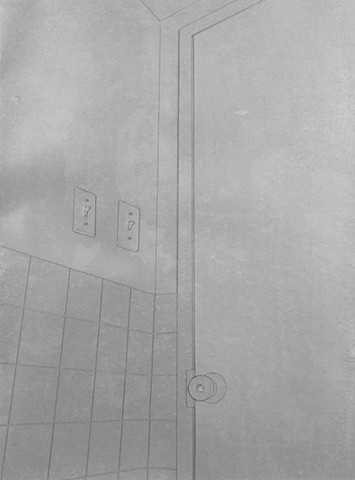Casey Ruble
Casey Ruble
Depicting sites that have a loaded history but appear seemingly ordinary today, Casey Ruble’s collages speak to the ways we remember—and forget—the charged events of our nation’s past. The pieces exhibited in this show are from her newest body of work, Great Wandering Shadows, which focuses on places across the country where race riots have broken out. Four monochromatic, large- and medium-scale collages, constructed from a reflective silver paper that has been metal-dried to produce stains and splotches on the surface, take as their subject the present-day locations of four riots: the 1866 New Orleans riot (in which white Southern Democrats attempting to regain power during Reconstruction attacked Republican statesmen and the African Americans who supported them), the 1900 Tenderloin District riot in New York (which erupted when a white mob avenged the fatal stabbing of a plainclothes police officer by a black man who thought the officer was accosting was his girlfriend), the 1919 Red Summer riot in Knoxville (sparked by whites after they stormed a jail in an attempt to lynch a black man who had been arrested—illegitimately—for murdering a white woman), and the infamous 1965 Watts riots in Los Angeles. Accompanying the collages, a life-size paper effigy of a zoot suit pays homage to the Mexican Americans attacked in Los Angeles during the 1943 Zoot Suit riots. All the works are titled with sentences taken from contemporaneous newspaper articles describing the events; the series title comes from W.E.B. Du Bois’s The Souls of Black Folk.
